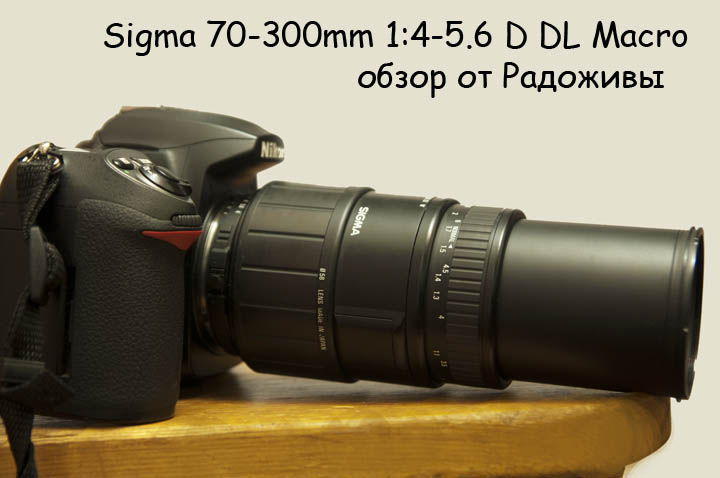
View Sigma AF 70-300mm F4.0-5.6 D DL MACRO
This review shows the Sigma 70-300mm F4.0-5.6 D DL MACRO - DL Macro 14/11 version with 1 SLD element.
Characteristic features of the Sigma 70-300mm F4.0-5.6 D DL MACRO, by which you can determine the version:
- large convex switch 'NORMAL || MACRO at 300 '
- macro mode only works at 300 mm focal length
- the prefix D DL MACRO in the name
- thin focus ring (diameter smaller than zoom) marker 'NORMAL' near 1.7 meters
- scale with magnification only for values 1: 3.5, 1: 3, 1: 2.5, 1: 2
History
There are a huge variety of various modifications, versions and subversions of Sigma class 70 (75) -300 mm lenses (approximately 13 versions).
The reasons for this wide variety are:
- Continuous lens improvement. For example, older versions designed for film cameras have been updated for better compatibility with digital cameras. Marking versions optimized for digital cameras includes the prefix 'DG'(latest versions from this line - DG, Apo dg, OS DG) First of all, the updates concerned enlightenment.
- Improvement of lenses by increasing the number of low dispersion elements Sigma SLD (Special Low Dispersion). Sigma lenses with 14/11 and 14/10 optical designs may have different numbers of SLD elements. An increased number of SLDs can be recognized using the prefix APO (apochromat) and red decorative ring. The APO 14/11 version has 1 SLD element more than the NON-APO version. The APO 14/10 versions have 2 SLD elements more than the same NON-APO versions.
- Non-observance of unitary marking for lenses with different mounts. So, for example, for Nikon cameras, some 70-300 Sigma lenses in their name written on the housing may include the additional letter 'D'(indicates the possibility of transferring the focusing distance to the camera). Also, the same version / sub-version for cameras of different systems can have a different style of its name on the body (for example, different parts of the name can be written in golden letters). Over time, the same version / subversion could change the location and method of applying name markers on your case.
- Most likely the versions of Macro Super, Macro Super II, unlike earlier models, have the ability to macro in the range of 200-300 mm. Earlier models had this mode only at 300 mm focal length.
- Improvement of lenses with body design changes... There are so-called 'second' lens sub-versions, for example DL Macro Super -> DL Macro Super II, APO Macro Super -> APO Macro Super II. Identification is complicated by the fact that there is no 'II' indication on the case, the 'II' mark is found only on the box and / or instructions. Such subversions can be distinguished the width of the focus ring, newer versions have a focus ring that is smaller in diameter than a zoom ring. There are also versions with a velvet-coated housing.
- In 2008, the DG and DG APO for Nikon cameras are updated to sub-versions with a built-in focus motor. New versions with a built-in focus motor do not have an aperture control ring, and number of microprocessor contacts increased to 10. All previous Sigma / Quantaray lenses for Nikon cameras came with no built-in focus motor.
- These lenses were also branded Quantaray. Finding out which version of the Sigma 70 (75) -300 is hiding under the name 'Quantaray' can be more difficult than with the original Sigma lenses.
In the general case, four main classes can be distinguished (depending on the optical design):
- Optical design 14/11, used in the first versions. APO subversion used 2 SLD elements. Conventional subversions used 1 SLD element. It is easy to distinguish by the very 'chubby' switch 'NORMAL MACRO 300' (only 300).
- Optical design 14/10, used in a huge variety of subversions. APO subversion used 3 SLD elements. Conventional subversions used 1 SLD element. Easy to distinguish by the small / conventional 'NORMAL MACRO (200-300)' switch (in the range of 200-300). Curious that the lens Olympus Zuiko Digital ED 70-300mm 1: 4-5.6 ED Replicates the Sigma 14/10 optical circuit with 3 SLD elements.
- Optical design 16/11, used only in the latest version with image stabilizer.
- Lenses with a 14/11 optical design are easily recognizable by the focal length range of 75-300 mm.
List of major versions:
- APO Macro 14/11 (2 SLDs)
- DL 14/11 (1 SLD)
- DL Macro 14/11 (1 SLD)
- DL Macro Super 14/10 (1 SLD)
- APO Macro Super 14/10 (3 SLD)
- DL Macro Super II 14/10 (1 SLD)
- APO Macro Super II 14/10 (3 SLD)
- DG Macro 14/10 (1 SLD) (for Nikon, there are 2 options depending on the focus motor and aperture ring)
- DG APO Macro 14/10 (3 SLD) (for Nikon, there are 2 options depending on the focus motor and aperture ring)
- DG OS 16/11 (1 SLD)
- 14/11 with a focal length of 75-300
The information I provided may not be accurate or incomplete, please, experienced users, please indicate inaccuracies in the comments.
All my reviews of such lenses (marking according to the inscriptions on the case):
- Sigma 70-300mm 1: 4-5.6 (for Canon, Macro 200-300)
- Sigma 70-300mm 1: 4-5.6 D D.L. Macro (for Nikon, Macro AT 300)
- Sigma 70-300mm 1: 4-5.6 D DL MACRO SUPER (for Nikon, Macro 200-300)
- Sigma 70-300mm D 1: 4-5.6 Apo dg (for Nikon, Macro 200-300)
- Sigma 70-300mm 1:4-5.6 DG OS (for Canon)
- Quantaray 70-300mm 1: 4-5.6 D LDO Macro (for Nikon, Macro AT 300)
- Quantaray 70-300mm 1: 4-5.6 D LDO Macro (for Nikon, Macro 200-300)
- Sigma Zoom AF-APO 1:4.5-5.6 f =75-300mm multi-coated Macro (for Nikon)
- Quantaray TECH-10 NF AF MULTI-COATED 1: 4-5.6 f =75-300mm (for Nikon)
A catalog of modern Sigma telephoto lenses is available see here.
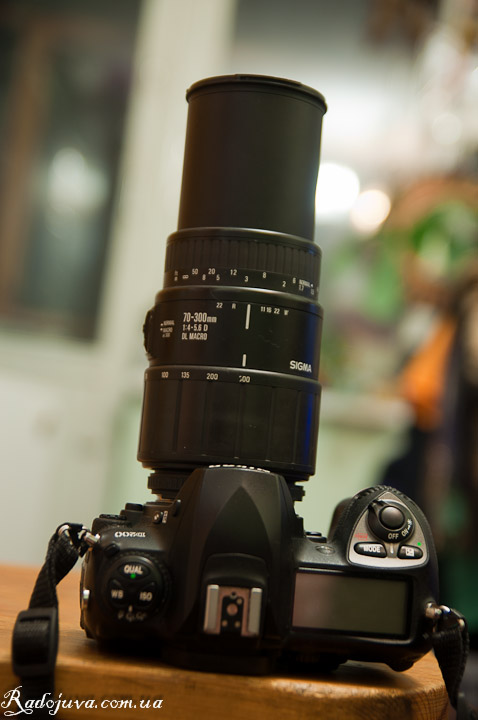
Sigma AF 70-300mm F4.0-5.6 DL MACRO
The first impression of the lens is that it is not heavy at all. When used, you immediately feel that the zoom ring is quite large, rubberized with very rough rubber. When zooming, the trunk extends as in most 70-300 zooms.
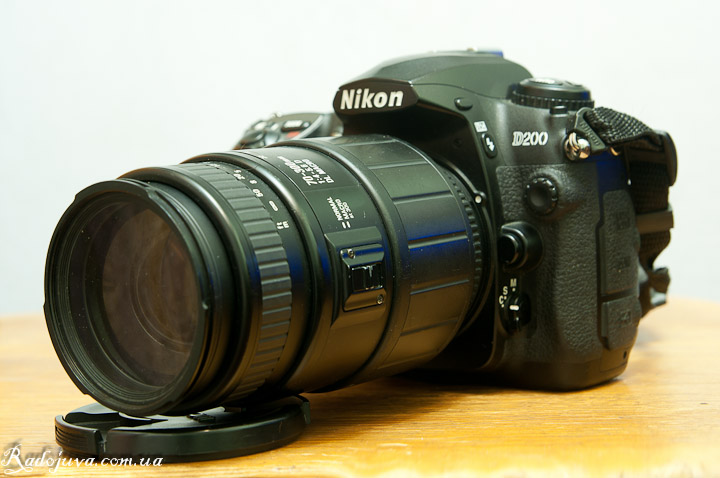
View Sigma AF 70-300mm F4.0-5.6 DL MACRO at 70mm
Important points about the Sigma 70-300mm 1: 4-5.6 D DL Macro lens (both good and bad):
- The lens is also suitable for full-frame cameras and for cameras with APS-C cameras. That is, the lens will work on Nikon D3 and Nikon D50.
- When used on cameras with an APS-C sensor (on a cropped matrix), the angle of the field of view will be narrower and equal to the focal length lens 105-450mmThat is a real body range. If it’s not clear, read the article about crop factor.
- The lens has aperture control ring, which means it can also be used on film cameras, and also, this is a very useful feature for various kinds of photo experiments, for example, for shooting macro in the reverse position of the lens. In order for Nikon cameras to be controlled from the camera, you need to set the minimum aperture F22 on the lens. If this is not done, the camera will not recognize the lens and will write fEE in the aperture value field. To lock the position of the diaphragm and use the automatic iris control, a special lock button on the lens is used. When set to F22, it can lock the aperture ring in that position. This is exactly how the aperture ring is arranged, for example, on a native Nikon lens Nikon 50mm F1.8D.
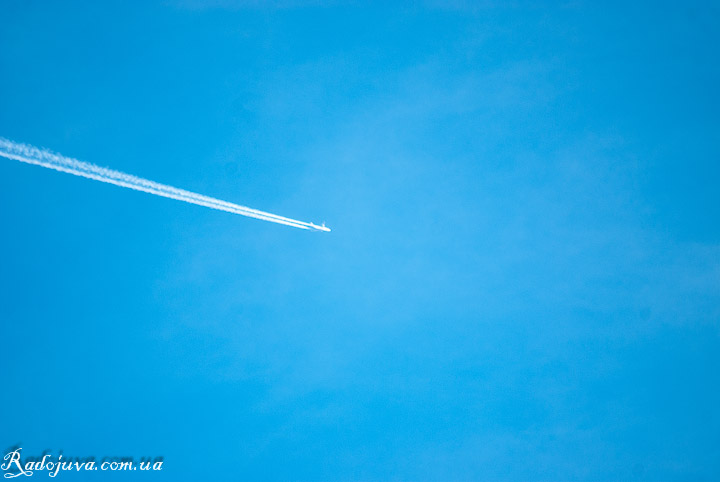
Sample photo on Sigma AF 70-300mm F4.0-5.6 D DL MACRO
- The lens has macro opportunity... This is the only option available with a focal length of 300mm and 'Macro at 300' mode enabled. When switched to 'Macro at 300' mode, the focus ring can rotate a few more degrees, lengthening the trunk and achieving 1: 2 macro. Of course, 1 to 2 isn't a real macro, but it's a very useful feature nonetheless. Also, keep in mind that zooming is blocked in this position. When the 'Macro at 300' mode is on, you will not be able to zoom until you switch the lens to the “Normal” mode. Most interestingly, autofocus works in both modes. The camera can focus itself in the “Macro at 300” mode. For example, a lens Nikon 35-70mm f / 2.8 AF-D ZOOM-NIKKOR cannot automatically focus in macro mode.
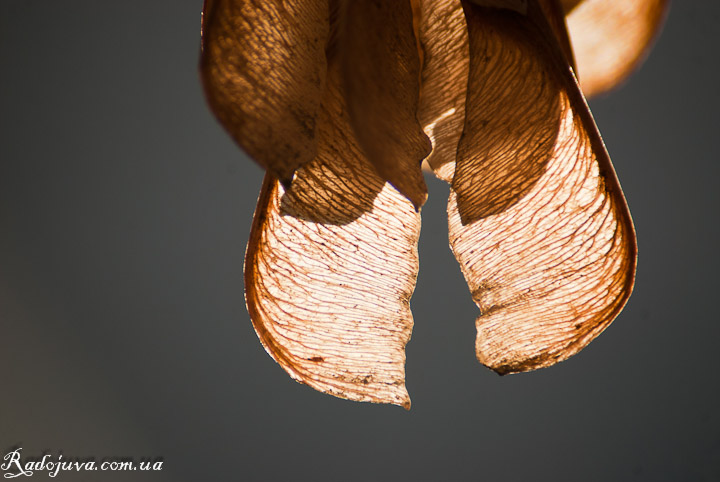
Example macro photo on a Sigma AF D 70-300mm F4.0-5.6 DL MACRO shot with hands in macro mode
- The lens contains all the necessary indicators - aperture, focal length, focusing distance, depth of field (for F11, 16, 22), as well as the magnification factor in the 'Macro at 300' mode.
- The diameter of the front lens under the filter 58mm.
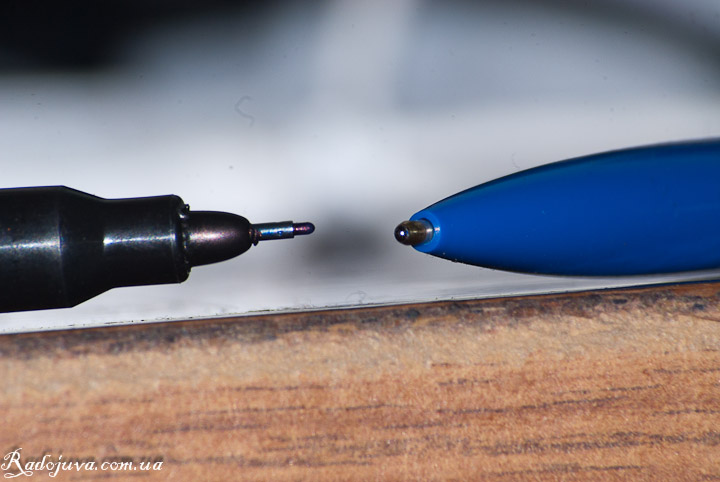
Macro on Sigma AF 70-300mm F4.0-5.6 DL MACRO
- When focusing, the front of the lens (trunk) and moves back and forth and turns. This makes it quite difficult to use special photo filters (gradient and polarization). Brother Nikon 70-300mm f 4.5-5.6G IF-ED AF-S VR Zoom-Nikkor does not have such an ailment.
- When zooming, the back of the lens moves, drawing in air. This is normal for this class of lens. But still, air therefore contributes to the absorption of dust into the chamber.
- There is no focus mode switching ring on the lens, it is not always convenient when using.

Photograph on Sigma AF 70-300mm F4.0-5.6 DL MACRO
It's important: auto focus with this lens is available only when using him on cameras with built-in motor focusing.
Exact list Nikon DSLR cameras with a built-in focus motor, on which this lens will focus automatically:
- D1, D1h, D1x, D2x, D2xs, D2h, D2hs
- D3, D3x, D3s, D4, D4s, D5, D6
- Df
- D50, D70, D70s, D80, D90
- D7000, D7100, D7200,D7500
- D100, D200, D300, D300s,D500
- D600, D610, D750, D780
- D700, D800,D800E, D810, D810a, D850
- Fujifilm FinePix S1 Pro, S2 Pro, S3 ProS3 Pro UVIR, S5 ProIS Pro
- Kodak DCS PRO 14n, DCS Pro SLR/n
Exact list Nikon DSLR cameras without a built-in focus motor, on which this lens will not focus automatically:
Only auto focus and sound confirmation of focus will not work with these cameras, all other important functions, such as automatic exposure metering and automatic iris control, will work well.
You will find a lot of useful information on the types of cameras and lenses Nikon here.
About the picture: The lens gives a sharp picture up to 200mm. Excellent sharpness is achieved at an aperture of 8.0 - for a budget telephoto, this is quite normal. From 200 to 300mm you have to work very hard to get a sharp image. Surprised that HA even at 300mm, even in very contrasting areas of the image within normal limits. Vignetting is even present on the crop, you can carefully look at the photo with a flying airplane yourself. The contrast is not very good, the color rendering is excellent. Distortion is almost invisible, but still takes place. The lens is great for photographing portraits, a large focal length allows you to well control the depth of field, which depends inversely on the square of the focal length, so do not pay attention to the fact that aperture the lens is small.
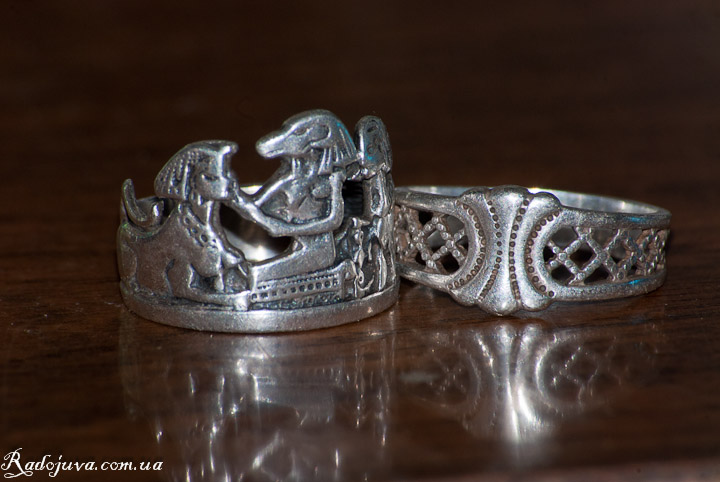
Example macro photo on a Sigma AF 70-300mm F4.0-5.6 DL MACRO
Personal impressions: autofocus at the lens is slow, this is due to focusing with a screwdriver and the fact that in macro mode the angle of the focus ring increases significantly and the camera needs to turn the lens focuser for a very long time. This is not pleasant enough when in macro mode the focuser goes there for about a few seconds. With the trunk extended, the lens has a rather funny look. In general, the lens did not produce РІРІРμС ‡ Р ° С,Р »РμРЅРёС Р. My native Nikon 70-300mm f / 4.5-5.6G IF-ED AF-S VR Zoom-Nikkor better in a row of indicators except macro. You always need to remember important how to take pictures, and not on which technique, and then the photos will be great.

Sample photo on Sigma AF D 70-300mm F4.0-5.6 DL MACRO
If you still really want to use the lens on non-motorized cameras like Nikon D40, Nikon D3000, then all other functions will work in the same way as on autofocus lenses, and the green dot in the lower left needle of the optical viewfinder will indicate the accuracy of focusing. Well, if you have a camera like Nikon D5000, Nikon D3100, Nikon D5100, then you can focus on sharpness in Live View.

Sample photo on Sigma AF D 70-300mm F4.0-5.6 DL MACRO
Sample photos on Sigma 70-300mm 1: 4-5.6 D DL Macro (without processing, the picture is like the ADC gave birth to it Nikon D200, RAW -> JPEG, resized 1600 * 1200, watermark).
On sale Sigma 70-300mm F4.0-5.6 D DL MACRO new not found. To use it is preferable to look at a newer model Sigma APO DG 70-300mm 1: 4-5.6, prices for which you can see hereor in the price block located below:
All prices on Sigma APO DG 70-300mm 1: 4-5.6
All Original Similar Nikon FX Telephoto Lenses
Below is a list of all Nikon Nikkor telephoto lenses without high aperture and with auto focus support:
- Nikon AF Nikkor 70-210mm 1: 4, 1986-1987
- Nikon AF Nikkor 70-210mm 1:4-5.6, 1987-1993
- Nikon AF Nikkor 75-300mm 1:4.5-5.6, 1989-1998
- Nikon AF Nikkor 80-200mm 1:4.5-5.6D, 1991-1999
- Nikon AF Nikkor 70-210mm 1:4-5.6D, 1993-2000
- Nikon AF Micro Nikkor 70-180mm 1: 4.5-5.6D ED, 1997-2005
- Nikon AF Nikkor 75-240mm 1:4.5-5.6D, 1999-2000
- Nikon AF Nikkor 70-300mm 1:4-5.6D ED, 1998-2006
- Nikon AF Nikkor 70-300mm 1:4-5.6D, 1998-2006 (?)
- Nikon AF Nikkor 70-300mm 1:4-5.6G, from 2000 to 2014, black or silver
- Nikon AF S Nikkor 70-300mm 1:4.5-5.6G ED VR IF SWM, from 2006 to 2017
- Nikon AF S Nikkor 70-200mm 1: 4G ED SWM VR IF N Nano Crystal Coat, from 2012 to the present day
- Nikon AF-P Nikkor 70-300mm 1:4.5-5.6E VR ED, 2017 to present
The names of the lenses are indicated according to their spelling on the case.
The catalog of modern Sigma telephoto lenses can be viewed here.
Comments on this post do not require registration. Anyone can leave a comment. Many different photographic equipment can be found on AliExpress.
Conclusions:
Sigma turned out to be pretty compact and nice lens. True, autofocus will work only on cameras with a built-in motor, and you need to close the diaphragm at the long end to get a sharp enough image. Very pleased with the macro at 300mm, however, to visit the sharpness in macro mode at 300mm is quite difficult.
Material prepared Arkady Shapoval. Training/Consultations | Youtube | Facebook | Instagram | Twitter | Telegram

















And what kind of adapter is needed for use with Nikon cameras?
Nothing, Sigma immediately releases lenses with a mount for Nikon.
and which is better for Nikon D3100 ??
This
or
Nikkor AF 70-300mm f / 4-5.6G Black
I want to get a telephoto lens for myself =)
Better native Niccor.
thank you =))
and you only have reviews and all that ??
there are no lessons online type ??
There are no online lessons. There are articles https://radojuva.com.ua/o-fotografii/
Good afternoon.
Please advise about choosing a macro lens:
NIKON 85mm f / 3.5G ED VR DX AF-S Micro-Nikkor or NIKKOR 60mm f / 2.8G ED AF-S Micro
In this case, it is not so much aperture that interests, but the ability to remove insects, etc. not static. Is 60 mm enough to get a close-up of 30-50 cm from the subject.
For which camera? With 85tkoy you can shoot macro from a greater distance than with 60mm.
Arkady, tell me, in your all-seeing glance, what is better than AF ASP XR LD Tamron 28-300 mm f / 3.5-6.3 or SIGMA70-300mm F4-5,6APO Macro Super2
These are different lenses, for what tasks is better?
for an additional lens to the kit or to replace it. For photographing portraits and for photo-peeping))). Then I'll try to pose the question - which one is sharper and clearer ???
On different apertures in different ways. This is generally a different class of lenses. If for peeping, then 70-300 will be better, it is slightly lighter.
Please tell me! Does it fit on the D60? And what else work well with such a device?
Thank you in advance!
Suitable, but not working. Works well https://radojuva.com.ua/2011/10/obzor-nikon-70-300mm-f-4-5-5-6g-ed-if-af-s-vr-zoom-nikkor/
Arkady, tell me, please. I want to buy my first lens instead of the whale. Whether the Nikon D 3100 Sigma AF 70-300mm f / 4-5.6 DG Macro Nikon suits me, the DG marking bothers me, sort of like it is for film and full-format matrices. And yet, I correctly understood that autofocus will not work and you need to focus manually?
Yes, your D3100 will focus manually. I advise you to take a native lens with a stabilizer - Nikon 55-200 f / 4-5.6G IF-ED AF-S DX VR Zoom-Nikkor
Convinced. I searched in Krasnodar where to buy, I found Nikon AF-S 55-200mm f / 4-5.6G IF-ED DX VR and Nikon AF-S 55-300 mm f / 4.5-5.6G ED DX VR.
If you choose from these three (your proposal is also considered), then which is better?
I'm interested in portraiture, reporting. I will take pictures with my hands.
The best of the three, of course, is the Nikon AF-S 55-300 mm f / 4.5-5.6G ED DX VR.
Good time! I bought myself something similar. I think a slightly more advanced model, because with the motor (Sigma 70-300 APO DG Macro) Autofocus works fine on DX cameras, I shot with the D5100. The sharpness didn’t disappoint me even by 300 mm, and f / 4 is also quite acceptable. I do not know if they have the same design, most likely yes, with the exception of the motor and a more decent appearance. Examples can be seen here, EXIF is present.https://picasaweb.google.com/100039784595379631925/NikonD5100SigmaAPODG
I have not yet completely targeted myself at this lens, these are only the first tests, but given that I got a new one for 100 cu with a guarantee, it was decided to leave it for now.)))
If I understand correctly, the focal length of 1,5 meters means that there should be at least 1,5 meters between the lens and the object, otherwise the photo will be out of focus (not considering the wet mode)?
Most likely you didn’t mean the focal length of 1.5 meters, but the focusing distance. The lens will not be able to focus closer.
Hey. I really want to do bokeh, but I can't. As far as I understand, in order for the blur to be the most effective, it is necessary that the aperture was opened as much as possible, the technical characteristics of the lens say that “Aperture F4 - F5.60 Minimum aperture F22”. I do not understand why, but sometimes in manual mode the aperture cannot be set to more than 5.6. My Sigma AF 70-300mm F4.0-5.6 APO MACRO DG doesn't have an aperture ring. And the macro-normal switch is a mechanical device that allows the focusing ring to be rotated up to 0.95. Is it really possible to achieve beautiful bokeh with this lens?
Yes really. Try 300mm focal length and F / 5.6 to take a subject close.
In order for the aperture -4 to be necessary, the focal length should be 70 mm, and for 300 mm it will be 5,6 .. how many do not adjust in manual mode) is the minimum aperture value for a given focal length)
Hello, I purchased a SIGMA 70-300mm F4-5.6 DG OS lens that works great! autofocus stabilizer work fine but I noticed this detail: when the lens is not working, the lens dangles slightly, as soon as you put the lens on the camera and on, its lens stops hanging, only the off starts to hang slightly again? What is this constructive or loose lens? The pictures obtained at all focal are excellent!
Found Sigma 70-300 / 4-5.6 DG macro - with autofocus at the price Nikon 55-200 f / 4-5.6G IF-ED AF-S DX VR - which lens did you recommend to choose (both brand new in the store) -1377gr. The device is 18-55.
55-200 because of the stabilizer
thank you so much, probably your advice resolved all doubts
Fasting 13.01.2013/16/55 at XNUMX:XNUMX And maybe it’s such that the lens parks and does not knock if the power to the lens is turned on?
I can not tell.
Arkady, please give me some advice. I want to buy a regular 3100-18 kit on my Nikon 55 lens. I just can’t choose between Sigma AF300-70 or Nikon AF-S 55-200 mm f / 4-5.6G IF-ED DX VR c On the one hand, Sigma has a longer focal length and they now go with their autofocus, but on the other hand they write that it is dark and at 300mm it soaps so that such parameters will not be used to their full potential. I understand that for such a price category of 1800 UAH I’ll shake off something supernatural but with my modest budget, and I’m counting on keeping in the area of 2000 the choice is small. Maybe you will advise something else. I am waiting for your answer as a specialist
The choice of alternatives is always very difficult, often 200mm is enough with the head.
PS I'm interested in the image quality - it will be the same as on the whale 18-55 or better, you understand, I just don’t want to take it because it only brings it closer, as a peeping
Good afternoon, Arkady, there is such a Sigma AF 70-300 f / 4-5.6 DG Macro (Motorized), according to the seller of the photomag there is a focus motor there, and even the name Motorized, I did not find anything about this on the sigma site, have you encountered such an option? Still interested in whether there really is a motor?
I have not encountered this, about the model from this review, too, there is nothing, Sigma generally has a lot of ghost lenses.
Yes, this model is with a motor. Sigma released it in 2008 specifically for compatibility with Nikons, which do not have a motor in the camera.
Well, that is, as I already understood, this is not original, I don’t know whether you can drop the link or not, if you delete something, but here http://fotomag.com.ua/sigma-af-70-300-f-4-5-6-dg-macro-(motorized)-nikon-f-opinion.html#cmt152990
Here answered the admin http://www.sigmaphoto.com/sigma-lens-chart if it’s interesting to look, there’s a bunch of those same ghost lenses.
Problem:
To shoot butterflies and insects, if you do not consider an expensive macro lens, is it worth taking this “70-300 macro” or taking contact macro-rings (available d700 + 24-70 2,8).
Experts macro tell me
If there is a D700 for two and a half bucks and a desire to shoot butterflies and insects, then there is simply no point in saving on a five hundred dollar macro lens, good optics are becoming more expensive every year, the dollar is falling, the yen is growing, which automatically leads to a rise in price, consider the purchase as an investment Plus, as a bonus, there will be great quality photos. When shooting outdoors, it is not enough to take into account the parameters of photographic equipment, and the nature of the models is also important, the aforementioned butterflies and insects are very capricious. I had the legendary Tamron-90mm F / 2.8, Macro, the picture was clear, everything was fine, but it focused slowly and sadly, with such a noise that all the living creatures scattered and fled in panic, I had to take a Nikkor-60mm F / 2.8G Macro - I am unspeakably satisfied with the result, works great on the D700 and D300, focuses quickly and quietly, just remember that the sound of the D700's shutter releases all living things from 200 meters, so there is no room for error, the second frame may not work. Here are some examples of working with a macro lens.
https://plus.google.com/u/0/photos/106010259136845326826/albums/5916310495064362129
Hello ! please tell me, is this lens suitable for sony alpha 290?
Yes, it worked perfectly, filmed at 290 1 years
Which lens is better - 55-300 or 70-300, nikkor both with autofocus and stabilization, the price all the same differs in 2 thousand hryvnias
I had a Canon EOS 300 film camera and a lens for it Sigma DL Super Macro 70-300 3,5-5,6
It is just DL
Switching to a number I put it on a Canon 350 D
Fotik took about 5-6 pictures, after which he began to issue error messages. I tried to shoot - put in place ... occasionally I took 1-2 photos.
Now I have a Canon 650 D. The situation is the same :( several shots and the error in connecting the contacts (I wiped it just in case)
Maybe DL is not meant for numbers or ??? then it’s a pity, - the film is gone forever, the glass disappears, and a new macro under the number - oh my money ...
I would be grateful for the information.
Older Sigma lens models for Canon work only on the open aperture with digital cameras, starting with 10D. Set the aperture priority mode and shoot in it.
>> Personally, I believe that this is a complete analogue of the Sigma AF 70-300mm F4.0-5.6 DG MACRO, but I cannot find any confirmation of this.
But Sigma AF 70-300mm F4.0-5.6 DG MACRO has a motor. As I understand it, the SIGMA AF 70-300 mm f / 4-5.6 APO MACRO DG does not have a motor. Believe it or not, but on my Nikon D60 with Sigma 70-300 autofocus WORKS. So I don’t understand where so much info comes from in the network that this lens has no motor. The lens itself is still like, but there is nothing to compare.